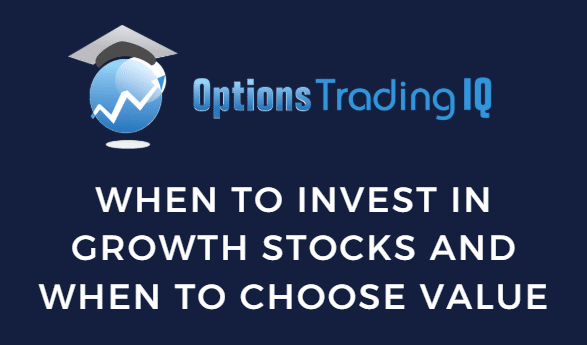

Introduction: The Growth vs. Value Debate
Investors often face a crucial decision when building their portfolios: should they focus on growth stocks, which are expected to expand rapidly, or value stocks, which are typically undervalued relative to their fundamentals?
Both growth and value investing have their merits, but the decision depends on an investor’s risk tolerance, market conditions, and financial goals.
Understanding when to invest in growth stocks and when to opt for value stocks can significantly impact portfolio performance.
In this article, we will explore the characteristics of growth and value stocks, when to invest in each, and how to balance these strategies for long-term success.
Contents
-
-
-
- Growth Stocks: Characteristics And Opportunities
- Key Characteristics Of Growth Stocks
- When To Invest In Growth Stocks:
- Value Stocks: Characteristics And Opportunities
- Key Characteristics of Value Stocks:
- When To Invest In Value Stocks:
- Balancing Growth And Value In A Portfolio
- Strategies For Balancing Growth And Value
- Market Conditions and the Growth vs. Value Rotation
- Growth Stock Outperformance
- Value Stock Outperformance
- The Growth-to-Value Rotation
- Conclusion: Choosing Between Growth And Value Stocks
-
-
Growth Stocks: Characteristics And Opportunities
Growth stocks are companies that are expected to grow their earnings at an above-average rate compared to the overall market.
These companies often reinvest their profits back into the business to fuel further growth, so they typically pay little to no dividends.
Growth stocks are often found in sectors like technology, healthcare, and consumer discretionary, where innovation drives rapid expansion.
Key Characteristics Of Growth Stocks:
High Earnings Growth Potential: Growth companies often have strong sales and earnings growth, which can lead to significant capital appreciation over time.
Higher Valuations: Growth stocks tend to trade at higher price-to-earnings (P/E) ratios because investors are willing to pay a premium for future growth prospects. This makes growth stocks more expensive relative to their current earnings.
Reinvestment of Profits: Instead of paying dividends, growth companies typically reinvest their profits into research and development, new products, or expansion. This supports their long-term growth trajectory.
When To Invest In Growth Stocks:
Bull Markets or Economic Expansions: Growth stocks tend to perform well during periods of economic expansion and bull markets when consumer demand and corporate earnings are rising. Investors are more willing to take risks and pay a premium for companies with high growth potential.
Low Interest Rate Environments: Growth stocks benefit from low interest rates because the cost of borrowing is lower, allowing companies to invest in innovation and expansion. Additionally, lower rates increase the present value of future earnings, which is a key factor in the higher valuations of growth stocks.
Long-Time Horizons: Growth stocks are ideal for investors with a long-term time horizon. Because these stocks can be volatile in the short term, long-term investors can ride out market fluctuations and benefit from compounding returns as the company expands over time.
Risk Tolerance for Volatility: Growth stocks are generally more volatile than value stocks, as their higher valuations make them more sensitive to changes in market sentiment, interest rates, or earnings expectations. Investors who can tolerate this volatility and focus on long-term growth may find significant upside in growth stocks.
Example: Technology companies like Amazon, Apple, and Tesla are classic examples of growth stocks. These companies have reinvested profits into innovation and expansion, driving significant growth in earnings and stock prices over time.
Value Stocks: Characteristics And Opportunities
Value stocks are shares of companies that are considered to be undervalued relative to their intrinsic worth.
These stocks tend to trade at lower price-to-earnings (P/E) ratios and may offer higher dividend yields than growth stocks.
Value investors seek companies that the market has overlooked or undervalued, expecting the stock price to rise once the market recognizes the company’s true value.
Key Characteristics Of Value Stocks:
Undervalued Relative to Fundamentals: Value stocks often have low P/E, price-to-book (P/B), and price-to-sales (P/S) ratios. These stocks are considered “cheap” compared to their fundamentals, such as earnings or book value.
Stable Earnings: Value companies typically have more stable and predictable earnings than growth stocks. Many are in mature industries with steady cash flow, allowing them to pay dividends to shareholders.
Dividends: Value stocks often provide attractive dividend yields, making them popular among income-seeking investors. These companies tend to be more established and distribute a portion of their earnings to shareholders rather than reinvesting all profits.
When To Invest In Value Stocks:
Bear Markets or Economic Uncertainty: Value stocks tend to outperform during market volatility, bear markets, or economic uncertainty periods. In these environments, investors often seek safer, more stable investments with predictable earnings, making value stocks more attractive.
High Interest Rate Environments: When interest rates rise, growth stocks are often negatively impacted because higher rates reduce the present value of future earnings. In contrast, value stocks, which are more focused on current earnings and cash flow, tend to perform better in high-interest-rate environments.
Market Corrections or Downturns: Value stocks can be particularly attractive during market corrections when stock prices have fallen, allowing investors to buy strong companies at discounted prices. If a company’s fundamentals remain solid despite a lower stock price, it could present a buying opportunity for value investors.
Lower Risk Tolerance: Value stocks are generally less volatile than growth stocks, making them suitable for investors with lower risk tolerance or those prioritizing income over capital appreciation. The steady earnings and dividend payouts of value stocks provide stability during market downturns.
Example: Companies like Johnson & Johnson, Procter & Gamble, and JPMorgan Chase are well-known value stocks. These businesses are well-established, generate stable cash flow, and are often considered defensive plays during periods of market volatility.
Balancing Growth And Value In A Portfolio
Investors don’t need to choose between growth and value exclusively; many successful portfolios balance both strategies.
The right mix of growth and value stocks depends on your financial goals, time horizon, and risk tolerance.
By diversifying across both types of stocks, investors can benefit from the potential upside of growth stocks while gaining stability and income from value stocks.
Strategies For Balancing Growth And Value
Core-Satellite Approach: In this strategy, investors build a “core” of stable value stocks that provide consistent dividends and low volatility. Around this core, they add a “satellite” of growth stocks that offer higher potential for capital appreciation. This approach balances stability with growth potential.
Market-Cycle Adjustments: Investors can adjust their portfolio allocations based on where the economy is in the business cycle. For example, during periods of economic expansion, they might increase their exposure to growth stocks while shifting toward value stocks during periods of economic uncertainty or contraction.
Age and Risk Tolerance Considerations: Younger investors with a longer time horizon and higher risk tolerance might lean more heavily into growth stocks to maximize long-term capital appreciation. As investors near retirement and their risk tolerance decreases, they might shift toward value stocks to prioritize income and capital preservation.
Dollar-Cost Averaging: For long-term investors, consistently investing in both growth and value stocks through dollar-cost averaging can help smooth out the impact of market volatility. This approach involves investing a fixed amount at regular intervals, regardless of stock prices, ensuring you buy more shares when prices are low and fewer when prices are high.
Market Conditions And The Growth vs. Value Rotation
The performance of growth and value stocks often rotates depending on market conditions.
Historically, value stocks tend to outperform during economic recoveries or market downturns, while growth stocks lead during periods of strong economic growth or market rallies.
Growth Stock Outperformance:
During the late 1990s dot-com boom and the post-2009 bull market, growth stocks significantly outperformed value stocks as investors poured into technology and innovative companies, driving economic expansion.
Value Stock Outperformance:
Value stocks have outperformed during market corrections, such as the 2000-2002 dot-com crash and the 2008 financial crisis.
Investors turned to undervalued companies with stable earnings and strong balance sheets during these periods of uncertainty.
The Growth-To-Value Rotation:
In recent years, there have been shifts in leadership between growth and value stocks.
For example, after a decade of growth stock outperformance following the 2008 financial crisis, value stocks began to regain favor during the economic uncertainty of 2020 and 2021, driven by sectors like financials and energy.
Conclusion: Choosing Between Growth And Value Stocks
Investing in growth or value stocks depends on an investor’s financial goals, market outlook, and risk tolerance.
Growth stocks offer higher potential returns but come with greater volatility, making them more suited for long-term investors who can ride out market fluctuations.
Value stocks provide stability, income, and protection during market downturns, making them ideal for conservative investors or those seeking income.
By understanding when to favor growth and when to choose value and by balancing these strategies in a portfolio, investors can achieve a well-rounded approach that maximizes both growth potential and income stability over time.
We hope you enjoyed this article on when to invest in growth stocks and when to invest in value stocks.
If you have any questions, send an email or leave a comment below.
Trade safe!
Disclaimer: The information above is for educational purposes only and should not be treated as investment advice. The strategy presented would not be suitable for investors who are not familiar with exchange traded options. Any readers interested in this strategy should do their own research and seek advice from a licensed financial adviser.










